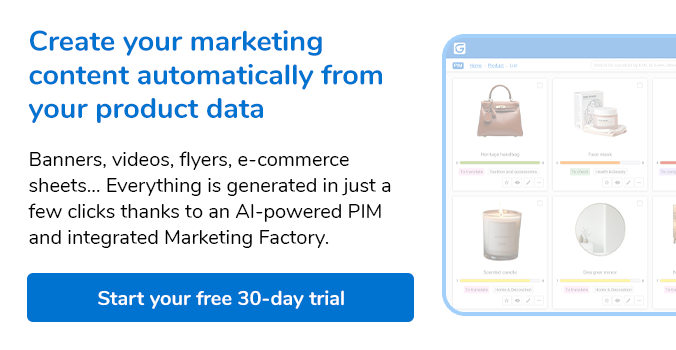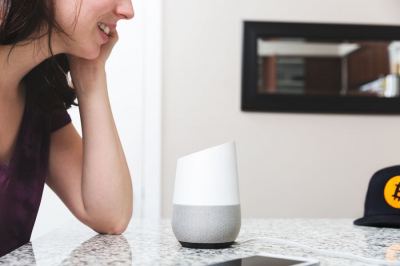As digital becomes increasingly present, the profiles and shopping habits of consumers have changed. Using all the physical and digital sales channels available, at any time they can research a product, compare products from different brands and/or trigger a purchase.
More demanding and connected than ever, today's shoppers have precise expectations for their global customer journey and won't hesitate to change for another brand if the information they are looking for is not available in the right place and at the right time. This means that company's have to really know the customer journey and understand the expectations on each of the shopping channels that they are using.
Discover 8 demands of today's consumers that a brand must embrace to remain competitive.
#1. Synergy between all selling channels
In an omnichannel context, 75% of today's shoppers1 expect to have a consistent product experience across all the shopping channels that they use (websites, Marketplaces, mobile apps…). Unwilling to accept inconsistency, 73% of shoppers1 would be likely to switch to a competitor brand if they don't find this consistency in your offer.
In response to this demand, brands must provide shoppers with unique product information, complementary to that presented on the other selling channels and this information must provide real added value.
#2. Detailed product information

In an online sales context, the new generation of shoppers expects brands to inform them well before the purchase: marketing descriptions, images from several angles, video demo, technical data (IAN, price, composition…)… 82% of shoppers2 want to access detailed information on the features of the product that they are researching.
Providing this information is also essential to avoid disappointment and to limit product returns: 50% of shoppers3 admit to having returned a product because it did not match its description.
#3. Responsibility and transparency
Today's shoppers have a social conscience and endorse brands that support social and environmental causes: reduced carbon emissions, improved waste management, choice of local partners… 70% of consumers4 want to know that their chosen brands are making efforts in these areas.
Increasingly responsible, shoppers put great importance on a brand's values when deciding where to shop: 46% of them4 consider a brand's values when deciding whether or not to buy a product.
#4. Optimized mobile browsing

Today's shoppers are hyperconnected and can use their smartphone at any time to find information before buying: 81%5 say that they often use their phone to research a product.
This means that brands must provide shoppers with the best possible mobile experience: easy and intuitive browsing, optimized loading speed, optimized display, and text readability… The brand risks seeing their visitors change their minds and choose a competitor brand if they are not happy: a one-second lag on a mobile page can reduce conversions by 7%6.
#5. Optimal protection of user data
Today's shoppers expect brands to guarantee optimal protection of their personal data. This will give them a sense of trust which is essential for making a purchase serenely.
With the development of hyper-personalization, user data has become an essential part of providing shoppers with a customized experience: 58% of shoppers1 are willing to share their data for such an experience, however shoppers also fear that this shared data may be compromised: 59%1 consider their personal data to be vulnerable to security breaches.
#6. Capacity to innovate

The new consumers are drawn to brands that are constantly innovating to exceed their expectations: the launch of a new product and/or service, use of new technologies, creation of new marketing campaigns… Innovative brands attract new shoppers: 56%1 of them are willing to buy from an inventive brand.
Shoppers are also increasingly difficult to impress and are often looking for originality when shopping: 63% of them1 expect a brand to come up with new products and/or services more often.
#7. Speed and responsiveness
Along with the development of new technologies, comes an increasingly impatient generation of shoppers with 64% of them1 expecting to receive an immediate response when they interact with a brand.
In answer to this, businesses are increasingly turning to chatbots, capable of responding to consumer questions in real time: 64% of shoppers7 consider a chatbot's “availability” to be its biggest advantage and 37%7 use them to resolve an urgent situation quickly.
#8. A customized and targeted experience
76% of new shoppers1 expect a brand to fully understand their needs at each stage of the customer journey. They also want to feel unique: 91% of them1 are more likely to buy from a brand that recognizes and remembers them and provides them with relevant offers and suggestions.
This means that companies need to send their shoppers targeted messages, and suggestions that are consistent with their geographic location (cultural norms, language, currency…), preferences (history of communication with the brand, previous purchases, preferred communication channels…) and their profile (gender, age, profession…).
#9. A need for authenticity
Today's shoppers are looking for more authenticity in the way brands communicate and interact with them.
Constantly exposed to advertising, they can easily recognize traditional campaigns and increasingly turn to content that “feels real.” For 90% of them this is an important factor when making a purchase decision, and 40% have already bought based on influencer recommendations.
To respond to this expectation, brands must stand out by promoting strong values – excellence, trust, innovation – and by sharing content that consistently reflects these values across all customer touchpoints: websites, social media, Marketplaces… This authenticity reassures shoppers and strengthens their engagement with the brand.
1
Salesforce Research. Customer Expectations Hit All-Time Highs. salesforce.com.
2
Pestanes, P. P. & Pesque, F. P. (2020, april 30). Baromètre des nouvelles tendances de consommation 2020. wavestone.com.
3
Chrum, A. C. 10 Stats That Prove the Importance of Product Content for E-commerce [Infographic]. onespace.com.
4
Schaeffer, L. S. (2019, october 2). Consumers Expect the Brands they Support to be Socially Responsible. businesswire.com.
5
Henault, J. H. (2020, april 9). 50 faits incontournables pour une stratégie E-commerce en 2020. semrush.com.
6
HubSpot. La liste indispensable des statistiques marketing. hubspot.fr.
7
Jovic, D. J. (2020, november 20). The Future is Now – 37 Fascinating Chatbot Statistics. smallbizgenius.net.







